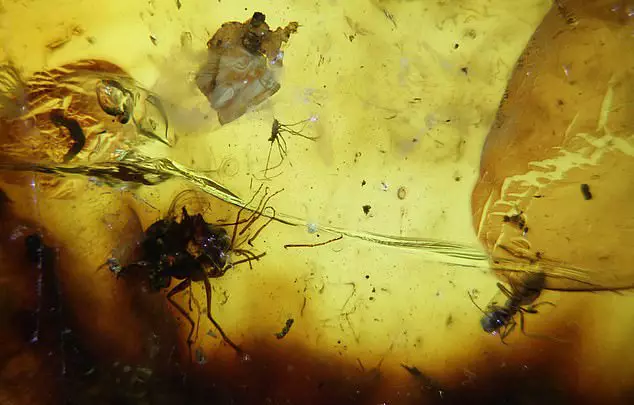
Birds do it, bees do it. Even educated fleas do it. What the classic Cole Porter song didn't talk about was flies doing it. But the discovery in Victoria, Australia of some fossilised amber confirms that even prehistoric flies do it. Or did it, anyway - considering the insects are over 41 million years old.
It seems that the insect couple were fornicating when they were trapped the gluey resin of the tree they were on and were subsequently frozen in amber, preserved in the middle of the act.
The resin then hardened over time, ensuring that the flies - and their entwined legs - were forever suspended in the act of procreation. What makes that even more remarkable, however, is that it only takes flies just a few seconds to copulate - which means this is truly a one in a 41 million discovery.

According to Jeffrey Stilwell of the Monash Univerisity in Melbourne, a palaeontologist and the co-author, along with fly expert Dan Bickel, of the paper that announced the discovery of the fossil, it's more than likely that the flies were indeed getting it on when disaster struck - or should that be stuck? - for them.
Advert
"You could say these long-legged flies were caught in the act 41 million years ago - which is astounding," he said. "The flies could have accidentally landed on the tree resin to mate, and then got stuck forever together, literally. You can imagine all of the statements by my amber student volunteers, one being 'Doin' it Gondwana style', etc."
The frozen fornicating flies were discovered in one of 6,000 pieces of fossilised amber unearthed from rocks dating back between 54 to 40 million years ago, and which were taken from two sites for the paper's study.

"This is one of the greatest discoveries in palaeontology for Australia," announced Professor Stilwell. "Amber is considered to be the 'Holy Grail' in the discipline, as organisms are preserved in a state of suspended animation in perfect 3D space, looking just like they died yesterday.
Advert
"But, in fact, [they] are many millions of years old, providing us with an enormous amount of information on ancient terrestrial ecosystems. This may be the first example of 'frozen behaviour' in the fossil record of Australia."
Featured Image Credit: Credit: Jeffrey Stilwell